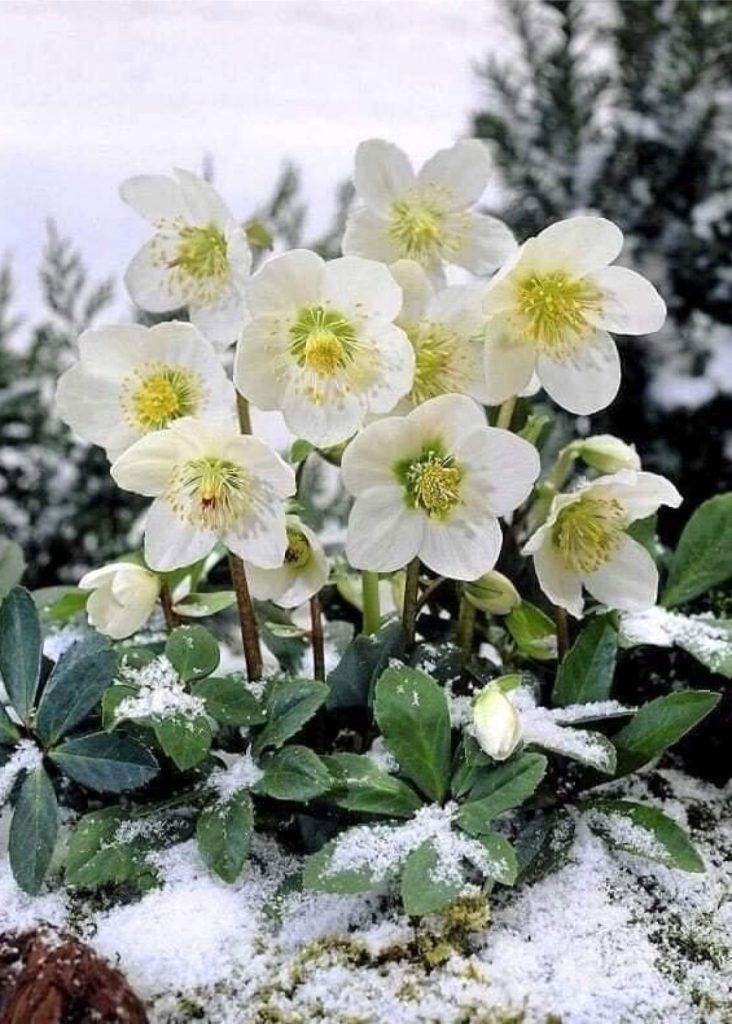
While heavy snow warnings have been issued nationwide, Christmas roses, which are said to be winter ladies and winter jewels, are blooming vigorously. It’s like enjoying the snow. The name “Christmas Rose” was originally given to the cultivar “Niger”, which belongs to the ranunculaceae and genus Helleborus and blooms in December. The flowering season for most Christmas roses other than Nigeru is February to April in Honshu, and April to May in the Tohoku region and Hokkaido. Because the flowers bloom when it snows, it is also called “Hatsuyukiokishi” or “Machiyukiso” in Japanese. In addition, tea ceremony masters gave it the Japanese name “kanshakuyaku” and displayed it in tea ceremonies. The Christmas rose has a legend that it was born from a girl’s tears, but it was introduced to Japan as a medicinal plant from the Meiji to the Taisho eras, and it is now a very popular plant as an undergrowth in Japanese-style gardens as a shade-tolerant plant.
全国的に大雪警報が出る中、冬の貴婦人とも、冬の宝石とも言われるクリスマスローズが元気よく花を開いています。まるで雪を楽しんでいる様です。「クリスマスローズ」という名前は、もともとはキンポウゲ科・ヘレボルス属のひとつで12月に花を咲かせる「ニゲル」という品種につけられましたが、ニゲル以外の多くのクリスマスローズの開花期は、本州で2月~4月、東北地方や北海道などでは4月~5月です。雪が降る時期に花が咲くことから、和名では「初雪起し」「待雪草」とも言われています。また、茶人達には「寒芍薬」と和名をつけられて茶席に飾られたりして一般には知られることなくごく一部の人々に密やかながら楽しまれてきました。少女の涙から生まれたという伝説を持つクリスマスローズですが、日本には明治から大正にかけ日本に薬用植物として導入され、日陰に強い植物として和風の庭の下草として今では根強い人気のある植物です。
